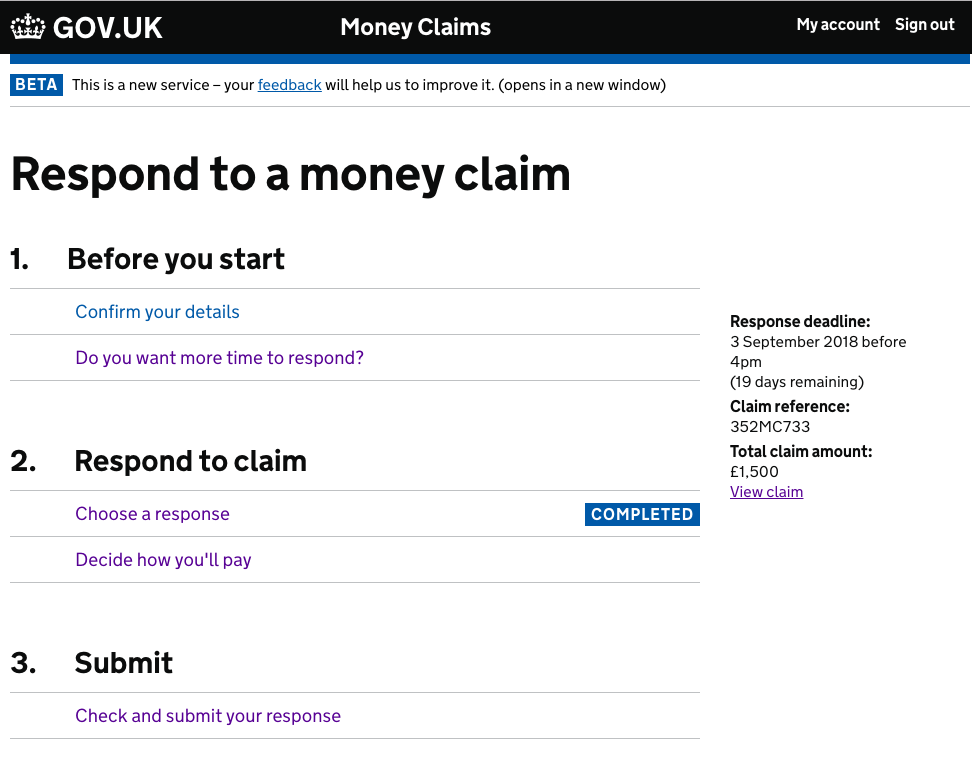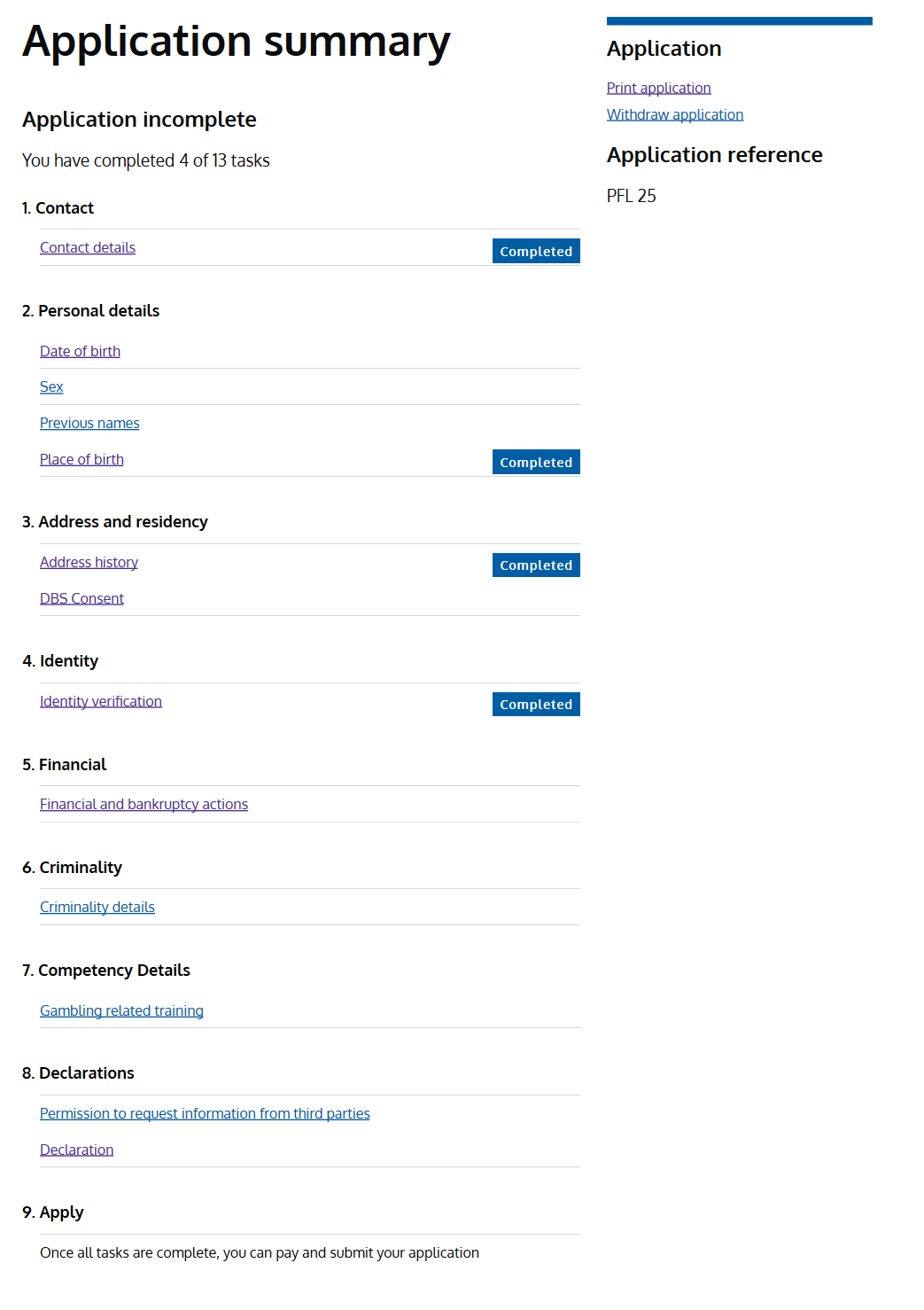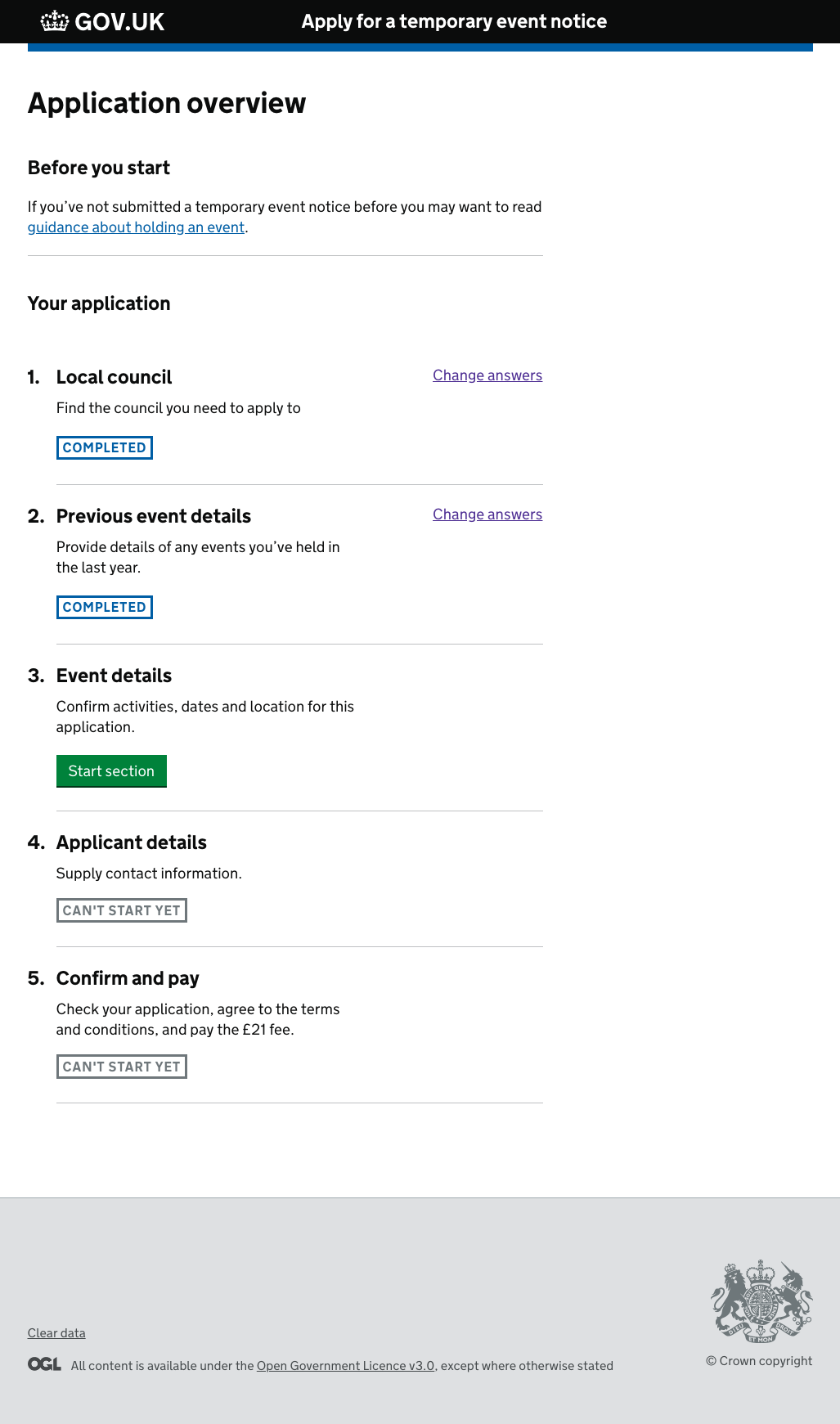Thought I'd just weigh in with a tweak we have had to implement for this pattern.
We are currently using it in a case working system and we had an issue where if one agent went in and chose some options that meant the task was not complete, to other agents it looked like no work had been done at all.
So, we needed a way to differentiate between a section that had not been looked at and a section that could not be completed. So we have added a grey 'not complete' badge to say 'yes, i've looked at it, but it's missing some information' vs 'nobody has looked at this section at all'.





















Use this issue to discuss this pattern in the GOV.UK Design System.